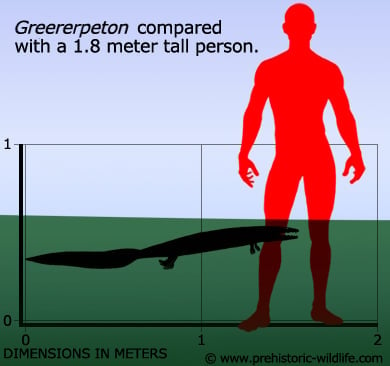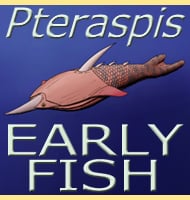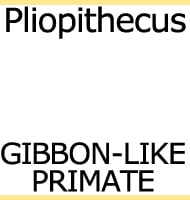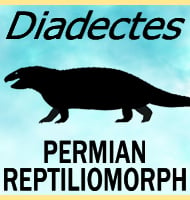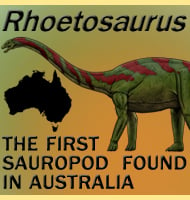In Depth
Greererpeton did not follow the other tetrapods onto land, instead it remained as an aquatic predator. Support for this style of life comes from poorly developed hearing, evidence of a lateral line (sensory apparatus found in fish), reduced limbs and an extended spine giving it a more eel like appearance. This suggests that there was plenty of prey to be found in the waters of the early carboniferous and that Greererpeton had specialised in hunting it.
Further Reading
– The cranial morphology of Greererpeton burkemorani Romer (Amphibia: Temnospondyl). – Zoological Journal of the Linnean Society Volume 76, Issue 1, pages 29–90 – T. R. Smithson – 1982. – The Postcranial Skeletal Anatomy of the Carboniferous Tetrapod Greererpeton burkemorani Romer, 1969 – Philosophical Transactions of the Royal Society vol. 323 no. 1213 75-133 – S. J. Godfrey – 1989. – Ontogenetic changes in the skull of the Carboniferous tetrapod Greererpeton burkemorani Romer, 1969 – Philosophical Transactions of the Royal Society of London B, 323:135–153 S. J. Godfrey 1989. – The mandible of the primitive tetrapod Greererpeton, and the early evolution of the tetrapod lower jaw. – Journal of Paleontology 75 (5): 1016-1042. – J. R. Bolt & R. E. Lombard – 2001.
